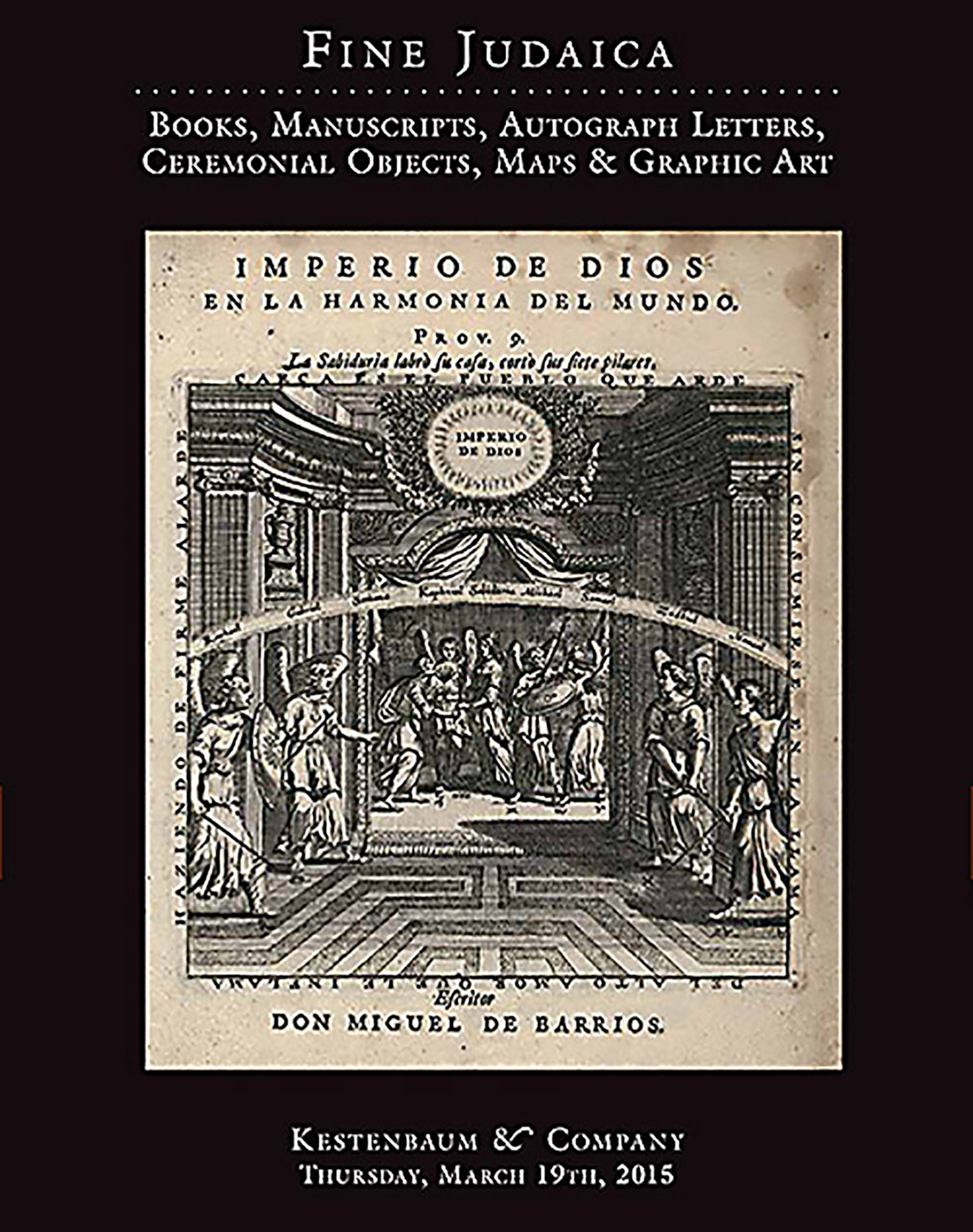Be’[ezra]th Ha[shem] Yith[barach] MeKiryath Arba Hee Chevron… [Printed Shada’r letter to the Jews of France, Holland, England and America, requesting financial support for the people and institutions of Hebron]

AUCTION 64 |
Thursday, March 19th,
2015 at 1:00
Fine Judaica: Books, Manuscripts, Autograph Letters, Ceremonial Objects, Maps and Graphic Art
Lot 139
(ISRAEL, LAND OF).
Be’[ezra]th Ha[shem] Yith[barach] MeKiryath Arba Hee Chevron… [Printed Shada’r letter to the Jews of France, Holland, England and America, requesting financial support for the people and institutions of Hebron]
(Venice): 1767
Est: $3,000 - $5,000
Shada’r letter recording the mission on behalf of the Jews of Hebron undertaken by Haim Rahamim Bagayo and Yitzhak Ze’evi, scheduled to take them to France, Holland, England and America. In years past this had been undertaken by the Chid”a (Chaim Joseph David Azulai) however increased financial pressures demanded that these two “Hahamim” - prominent scholars - also travel to solicit funds for their brethren in Eretz Israel.
Despite stated intentions to visit America, no evidence exists that the two rabbis from Hebron ever did reach America’s shores. Yet it is on record that advanced notice of an intended visit was in fact sent to Rhode Island and New York and subsequently in 1770 the Jewish communities of Newport, New York City as well as Philadelphia together contributed $70 to advance the mission. It is beguiling to note that the Jews of Newport, could not read Bagayo and Ze’evi’s flowery Hebrew and thus had to resort to the services of the Christian Hebraist Ezra Stiles, to translate for them (see G. Kohut, Ezra Stiles and the Jews (New York, 1902) pp. 64-66).
Bagayo and Ze’evi spent nine years traveling on this mission, residing in each visited city for extended periods of time. They were among the most resourceful and effective emissaries from Eretz Israel and the present printed notice of their journey attests to the success of their fund-raising.
Although Yaari (Sheluchei Eretz Yisrael, pp. 586-89) cites a Shada’r letter relating to these two emissaries from this period, the wording in our letter differs from the language cited by Yaari. Moreover, Yaari did not in fact see the letter from which he quotes, but cites versions published by M. Rabinowitz and Y.M. Toledano in Mizrach Uma’ariv, Vol. III (1929) pp. 150-51 and 378-80.
